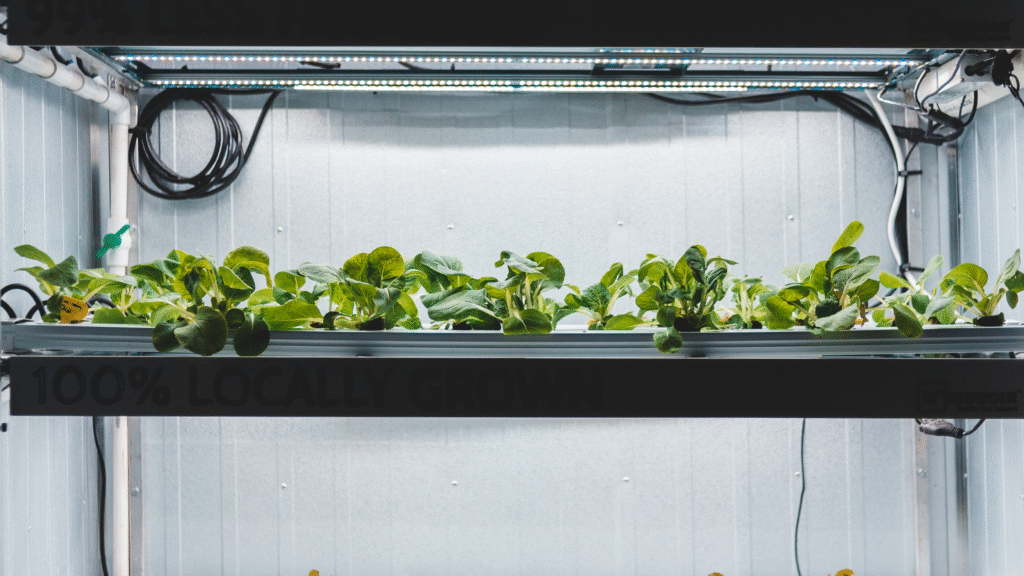Gardening becomes easier and more enjoyable when you have the right tools. Whether you’re planting flowers or maintaining a vegetable bed, using quality equipment saves time and effort. In this blog post, I’ll share five of the best gardening tools available online. These tools are highly rated, durable, and suitable for both beginners and experienced gardeners.
Key Takeaways:
- Fiskars Bypass Pruning Shears are ideal for clean cuts on small branches.
Buy on Amazon- Scuddles Garden Tools Set offers all the basic tools in one kit—perfect for beginners.
Buy on Amazon- Corona Extendable Hoe and Cultivator makes weeding and soil loosening easier without bending.
Buy on Amazon- Garden Guru Trowel is strong, comfortable, and great for digging and transplanting.
Buy on Amazon- KSEIBI Garden Kneeler and Seat helps reduce knee and back strain during long gardening sessions.
Buy on Amazon
Best Gardening Tools
To save you from trials and errors, I have researched and hand-picked the following gardening tools:
1. Fiskars Bypass Pruning Shears
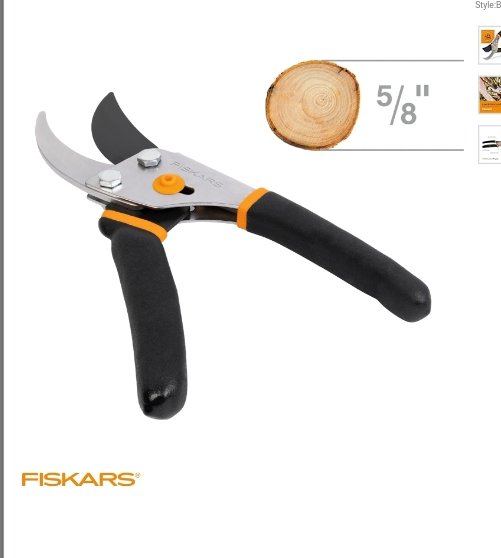
Product Description:
The Fiskars Bypass Pruning Shears cut cleanly through stems and small branches. The non-slip handle improves control. The steel blade stays sharp and resists rust.
Pros:
- Sharp blade cuts up to ⅝ inch thick branches
- Easy-to-grip handle for comfort
- Blade has a non-stick coating to reduce friction
- Lightweight and easy to handle
Cons:
- Not ideal for thicker branches
- Blade may need frequent cleaning to maintain performance
2. Scuddles Garden Tools Set (8-Piece)
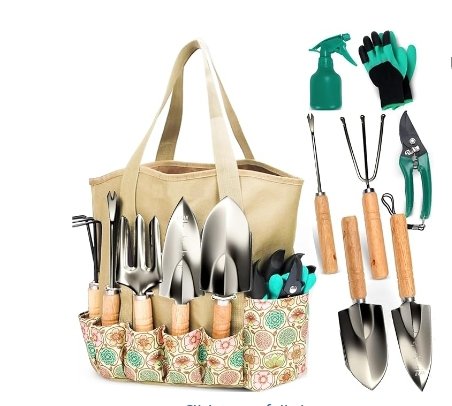
Product Description:
This gardening set includes a trowel, transplanter, hand rake, weeder, pruner, gloves, spray bottle, and a durable storage tote. It’s a full kit for everyday gardening.
Pros:
- Comes with all essential hand tools
- Tools made from rust-resistant aluminum
- Tote bag has pockets for organization
- Great gift for beginner gardeners
Cons:
- Tools may feel small for larger hands
- Pruner is suitable only for light-duty use
3. Corona Extendable Hoe and Cultivator
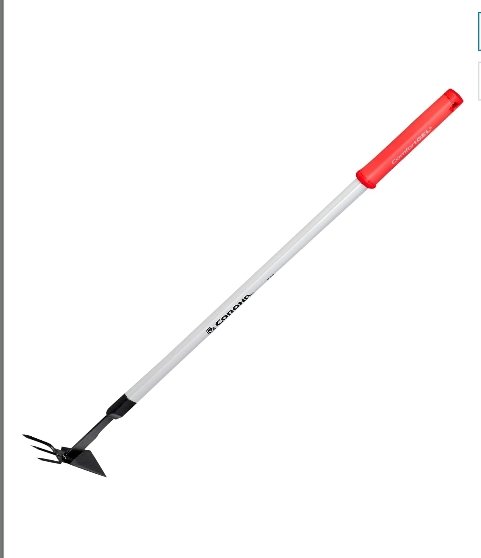
Product Description:
This two-in-one tool functions as a hoe and a cultivator. It has a telescoping handle that adjusts from 18 to 32 inches, making it easier to reach garden beds without bending.
Pros:
- Dual head offers two functions in one tool
- Telescoping handle reduces strain on the back
- Strong steel construction
- Good for weeding and loosening soil
Cons:
- Not ideal for rocky soil
- Locking mechanism may loosen over time
4. Garden Guru Trowel
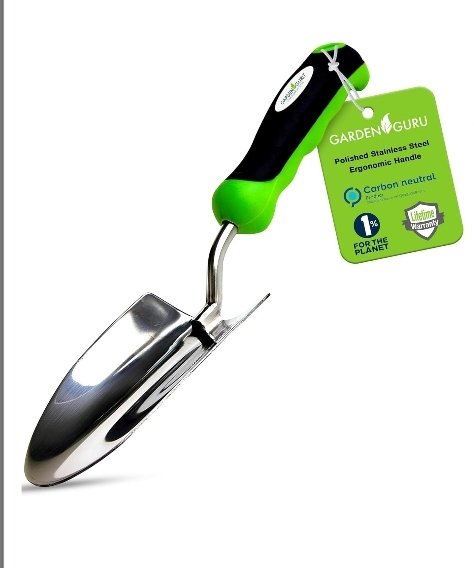
Product Description:
This hand trowel is built for digging, transplanting, and turning soil. It has a wide blade and a comfortable handle. It’s solid, with one-piece stainless steel construction.
Pros:
- Durable steel that won’t bend
- Ergonomic grip for comfort
- Wide blade for faster digging
- Rust-resistant surface
Cons:
- Heavier than plastic alternatives
- No hanging hole on the handle
5. KSEIBI Garden Kneeler and Seat
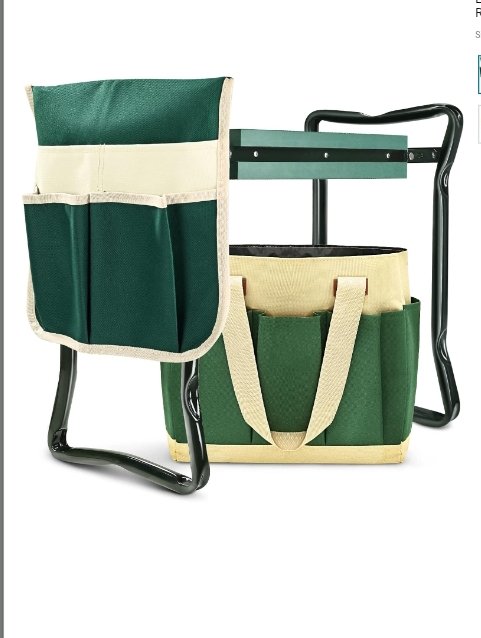
Product Description:
This foldable kneeler acts as a seat and a kneepad. It protects your knees while planting and can be flipped for sitting during pruning or resting. It also includes two side pouches for holding tools.
Pros:
- Dual function: kneeler and bench
- Side tool pouches for convenience
- Foldable and easy to store
- Lightweight yet sturdy
Cons:
- May not support very heavy weight
- Padding could wear out with frequent use
Buyer’s Guide: How to Choose the Right Gardening Tools
Buying gardening tools is more than picking what looks good. You need to think about comfort, material, and your specific gardening tasks. Here’s what to consider:
1. Purpose of the Tool
- Use pruning shears for cutting stems and branches.
- Use trowels for digging, planting, and transplanting.
- Use cultivators and hoes for loosening soil and weeding.
- Use a kneeler or seat if you spend long hours on the ground.
2. Material Quality
- Look for stainless steel or rust-resistant aluminum. These last longer and are easier to clean.
- Avoid plastic handles that can break easily. Rubber or padded grips offer better control.
3. Comfort and Ergonomics
- Choose tools with soft, non-slip grips.
- Lightweight tools are easier to use for long periods.
- Telescoping handles help reduce bending and back strain.
4. Storage and Portability
- Tools with hanging holes or foldable parts are easy to store.
- If you’re buying a set, check if it includes a carry bag or pouch.
5. Durability vs. Price
- Don’t just go for the cheapest option. A strong tool saves money in the long run.
- Mid-range tools often offer the best value for beginners and casual gardeners.
6. User Reviews
- Always read recent customer reviews. Look for consistent mentions of performance, comfort, and durability.
FAQs
What are the must-have tools for beginner gardeners?
If you’re new to gardening, starting with a few basic tools can make your experience smoother and more enjoyable. A sturdy trowel helps with digging and planting, while pruning shears make trimming easy. A hand rake clears debris and loosens soil, a weeder removes unwanted plants at the root, and a pair of durable gloves protects your hands. These essentials cover most basic gardening tasks and give you the confidence to grow from there.
How often should I clean my gardening tools?
Cleaning your tools after each use keeps them in top shape. When tools are left dirty or wet, rust and bacteria can build up quickly. Use a dry cloth or brush to remove soil and rinse off any residue. For metal parts, a quick wipe with vegetable oil or WD-40 prevents rust and extends the tool’s life. Well-maintained tools also reduce the risk of spreading plant diseases.
Are stainless steel tools better than aluminum ones?
Both materials have their benefits, but stainless steel is generally stronger and more resistant to rust, making it ideal for heavy-duty work. Aluminum tools are lighter and easier to handle for short tasks, but they may bend if used in hard soil. If you want tools that last through many seasons, stainless steel is often worth the extra cost.
Can I use pruning shears on thick branches?
Pruning shears work best on branches up to ⅝ or ¾ of an inch thick. For anything larger, using them can damage the tool or strain your hand. If you’re cutting thicker wood, use loppers or a pruning saw. These offer better leverage and are designed for heavier cuts without harming the plant.
What’s the difference between a trowel and a transplanter?
Though they look similar, these two tools serve different purposes. A trowel has a wide, curved blade ideal for digging holes and breaking up soil. A transplanter features a narrower blade with depth markings, which helps you move small plants or seedlings while disturbing the roots as little as possible. Both are valuable, but for precision, the transplanter is the better choice.
Is a garden kneeler really necessary?
If you spend a lot of time planting or weeding at ground level, a garden kneeler can save your knees and lower back. It provides cushioned support when kneeling and often doubles as a small bench. Many also come with tool pouches attached, so you don’t have to keep getting up to fetch what you need. For anyone with mobility concerns or joint pain, it’s more than just a comfort item—it’s a smart investment.
How do I prevent tools from rusting?
The easiest way to prevent rust is to keep tools dry and store them indoors after use. Moisture is the main cause of rust, especially on steel blades and metal handles. Wipe off water, sap, and soil before storing. For added protection, lightly oil the metal parts. This creates a barrier that keeps moisture out and keeps the tools smooth and functional.
Do I need a full toolset or can I buy tools one by one?
If you’re just starting out, a complete toolset gives you everything you need in one purchase and usually includes a storage tote or pouch. It’s also more affordable than buying tools individually. However, if you’re a more experienced gardener or have specific needs, buying individual, high-quality tools might be the better route. You can build your collection gradually, focusing on durability and comfort.
How do I know if a tool fits my hand size?
A good fit makes all the difference. Look for tools with ergonomic handles that offer grip and control. Some tools come in different sizes or include soft padding to fit various hand shapes. Read customer reviews for feedback on size and grip. If your hand feels cramped or strained while using a tool, it’s likely not the right size for you.
Can kids use these tools safely?
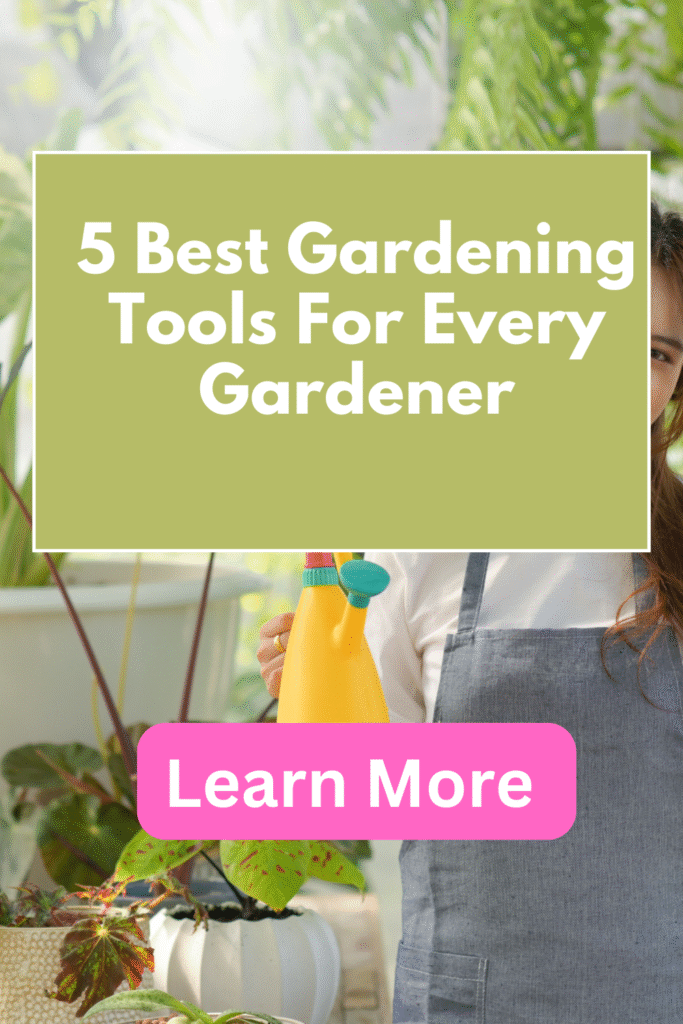
Standard gardening tools are often too heavy or sharp for children. If you want to get kids involved in gardening, it’s safer to buy child-sized gardening kits made specifically for small hands. These tools are lighter, safer, and often made from plastic or softer metals. Supervision is still important, but with the right tools, kids can enjoy gardening and learn valuable skills early.
Conclusion
The right gardening tools help you work smarter, not harder. From precise pruning to comfortable digging and weeding, these five picks offer great value. Whether you need a complete toolset or a specific helper like a kneeling bench or shears, each product here improves your gardening experience.
Before buying, consider your garden size and what tasks you do most. Then pick the tool that fits your needs best.


